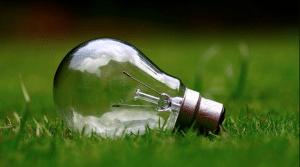How To Create More Sustainable Marketing Tools For Your Business

Marketing is an essential element of any business. Whatever industry you work in, you need to be able to promote your products and services to your customers.
But does marketing need to come at the expense of sustainability?
In a business that is trying to consider the sustainability of every one of its actions, how do you ensure your marketing efforts are as sustainable as possible?
Here’s how you can create more sustainable marketing tools for your business
Make Use Of Recycled Materials
It can be hard for businesses to exist in modern-day without producing anything. While much of your marketing can be done online, your offline marketing will involve paper.
Create designs for flyers online and use a brochure template . Once you have the perfect design, find locally sourced sustainable supplies of recycled paper from paper recycling companies.
By taking control of the printing process, you will have a better understanding of where your paper has come from.
The same logic should be applied to all of your packaging design.
Use Green Servers For Your Website
Every time someone opens a web page, it burns 6 grams of C02 . This may not sound a lot, but think about how many web pages you open in a day and consider how many people on this planet are doing the same.
Internet usage accounts for 2% of all carbon emissions. With that in mind, it is essential that you consider this when carrying out your web marketing.
Much of the environmental impact associated with this figure will come from the power it takes to run the hosting sites on which websites live.
Find a web host for your website that only use carbon-neutral renewable sources to run their servers.
You may need to shop around and dig deep into the way each web host operates; however, there are several green hosting companies out there that can help you lower your carbon footprint in this way.
Focus On Education
Whether your business is marketing based on its green credentials and you have a product that is designed to be environmentally friendly, or, you just want to your bit for the future of the planet, there is always room for education in your marketing.
Point out when you are making a conscious effort to employ sustainability within your marketing. If others see you using this, it will have a two-fold benefit. Firstly, it may influence other brands to follow suit and join you on their sustainability journey, and secondly, it will give you credibility with your customers.
If you can educate others while selling your products at no extra cost, then why would you not?
Use Your Green Credentials To Make The Sale
Many companies will market based on sustainability . If your products purposely shun animal testing, are ethically sourced, or are made of sustainable or recycled elements, then these are powerful sales tools in themselves.
Make use of your green credentials, and you will appeal to a wider, more environmentally conscious customer base.


